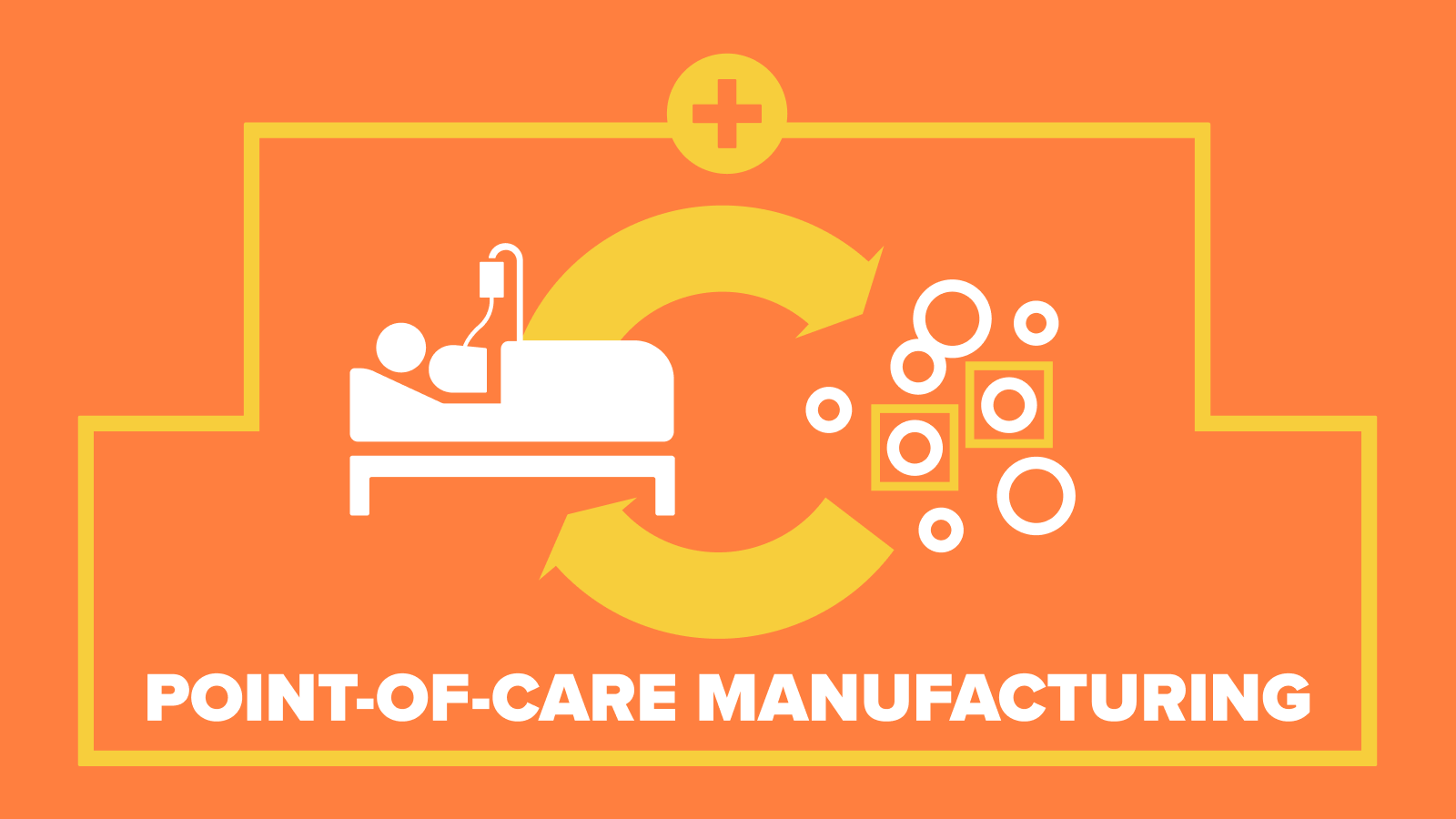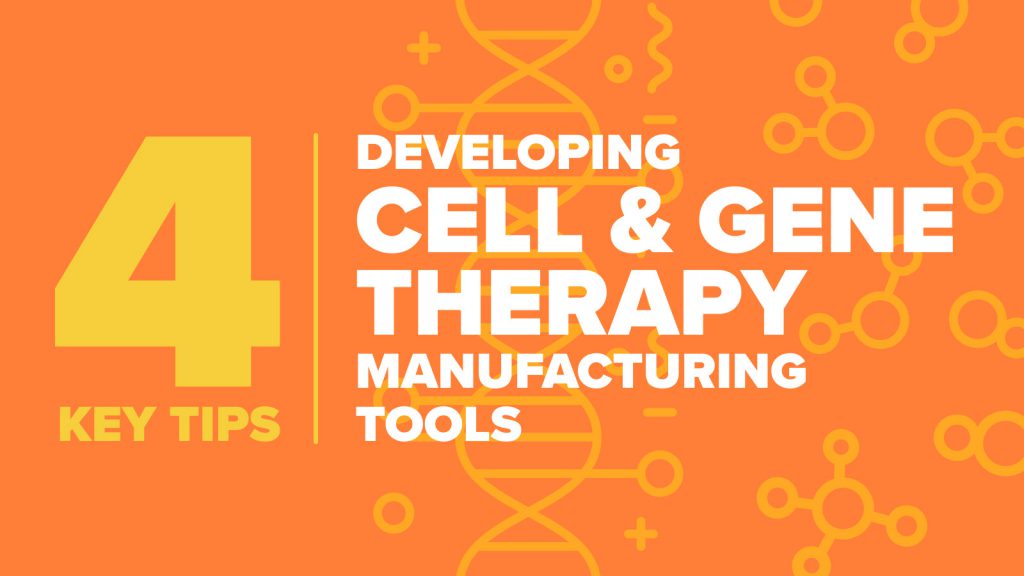
Cell and gene therapies show great promise as cancer treatments. However, patient access, both geographically and financially, is a major challenge to widespread adoption. In order to provide therapies to more patients that desperately need them, the industry is exploring a range of options including point-of-care (POC) manufacturing. In this article, I will explore POC manufacturing and look at what needs to happen to make the vision a reality.
The current state of play
POC manufacturing is a popular and polarizing topic of debate, as observed at recent Cell and Gene Therapy conferences. What is clear to me is that when it comes to POC and centralized manufacturing, it’s not a binary choice. Centralized manufacturing is not going away, even if POC manufacturing is adopted. This is because not all diseases and therapies are suited to POC manufacturing. And in between centralized and POC manufacturing there is also decentralized manufacturing, whereby manufacturing can occur at multiple GMP facilities in different locations. That said, the emergence of POC as a viable option is exciting albeit controversial. Is it feasible?
To me, it seems likely that POC manufacturing will play a part in the future of cell and gene therapy, at least for autologous CAR-T. But there are many hurdles – both technical and regulatory – it needs to overcome first.
Technical advancements making POC manufacturing possible
In my opinion, there are four main technical improvements that are crucial to enable POC manufacturing: a move to fresh product (not cryopreserved), automation, miniaturization, and improved digitalization.
Fresh product: One of the big differences between centralized and POC cell therapy manufacturing will be the ability to use fresh product. This is not new – Dendreon developed PROVENGE®(sipuleucel-T) and it has been available in the United States since 2010. With centralized manufacturing, you are generally cryopreserving cells at the start and end of the manufacturing process to assist in managing the logistics of scheduling manufacturing and administration of the therapy to the patient. The cryopreservation process can lead to cell loss, which in turn means you need to expand and grow more cells from your original sample to ensure sufficient cells for a dose. This can add time to the process. A University of Pennsylvania study showed it was possible to create functional CAR T cells in under 24 hours without the need for T-cell ex vivo expansion. This is ideal for POC manufacturing. The use of reduced cell numbers would also make it easier to reduce the size of processing tools and disposables as they won’t be required to handle such high cell numbers. There is clearly a tradeoff here between the reduced time and cost to manufacture the cell therapy and potential increased cost for rapid QC and release testing, as well as the cost and effort to coordinate the administration of a non-cryopreserved (fresh) therapy.
Miniaturization: Miniaturization will be a key part of how tools manufacturers adapt or develop cell processing systems for use in POC manufacturing for cell and gene therapy. If labs are to be built in clinics or hospitals, there simply won’t be room for a lot of the manufacturing tools in the format we currently have them. However, we’re already moving in the right direction with current tools smaller than they were, with simplified single-use consumables to handle fluid transfers. Miniaturization can only work if we are handling significantly lower numbers of cells required for a therapeutic dose, as shown to be possible in the aforementioned U Penn study. As a result of this we are seeing companies, such as Sarcura and Indee Labs using microfluidics and lab-on-a-chip technology to shrink the instrumentation footprint even further. This presents challenges, particularly around material selection for cell contact components, which up until now have been tubing sets and a limited number of USP Class VI gamma stable plastics for injection molded parts.
Integration/automation: Cell Therapy manufacturing improvements over the last 10-15 years have seen the transition from manual, open processes to single-use technologies (SUTs), as has been the case in larger scale bioprocessing for the GMP manufacture of biologics. The potential significant advantage of SUT in the POC approach is that it can allow the transition to lower grade cleanroom space (one of the key costs in centralized manufacturing). The currently approved CAR-T therapies utilize SUT solutions for most of their manufacturing processes. If we move away from centralized manufacturing, then more integrated and automated solutions will be required to ensure a simplified operator experience and ultimately product quality.
Several companies are now taking up the challenge to reduce the labor component of the C> manufacturing process in the centralized and decentralized model including Cellares, where the process is fully integrated and utilizes automation and robotics to control the entire workflow. This provides confidence when setting up new decentralized sites as it largely removes the human element. However, the technical transfer is generally time-consuming and therefore costly as the process must be re-validated at the new site. Others providing solutions in the decentralized or distributed manufacturing space include Lonza (Cocoon) and Ori-Biotech, but in these cases, it is more around integration of the workflow and not as reliant on robotics. There is also a modular approach to decentralized manufacturing that has been adopted by some of the key providers to the industry (Thermo Fisher, Cytiva, Scale Ready etc.) that allows for some choice in unit operations but straight forward integration of the processing steps, particularly for CAR-T. Similar to Cellares, companies such as Multiply Labs and Cellular Origins are implementing solutions that use robotics and automation to link instruments performing unit operations, thereby reducing labor costs and enabling better control of the process and increased throughput.
However, I do not see the above approaches as optimal for true POC manufacturing, primarily due to the space requirements and their need for full GMP control. If we can move to fresh product and miniaturization, there is scope for further improvements in integration and automation that would be a better fit for POC manufacturing.
Digitization and analytics: POC manufacturing will require digitization especially for chain of custody, in-process quality control and release testing. Once again, the industry is already moving this way – paper batch records are becoming a thing of the past. However, as Kimberly Schultz from the FDA’s Office of Gene Therapy highlighted in an ISCT webinar on POC manufacturing, POC manufacturing will likely require further advancements for in-line analytics to measure quality and demonstrate comparability between sites. Two key areas requiring potential innovation or adoption of existing technologies are rapid sterility testing (already something that can be done using molecular diagnostic assays) and potency assays, which are dependent on the specific needs of the therapy. As Patrick Hanley, Director of the Cell Therapy Program at the Children’s National Hospital, said in the ISCT webinar, QC testing is currently a complex process that requires highly skilled staff. This will be a critical aspect of enabling POC manufacturing. It is the management and control of the process under GMP manufacturing, and lack of clarity on how this will occur in the POC setting, that is behind the caution in moving to POC manufacturing.
Regulatory and quality hurdles
Cell and gene therapies are regulated as biologics, which requires GMP manufacturing. Moving to POC manufacturing brings up questions of how consistent and comparable quality will be managed across multiple sites. In the ISCT webinar, Kimberly Schultz acknowledged that there was a desire for more guidance from the FDA on regulatory expectations for human drug and biologic products. She indicated that for POC manufacturing, the therapy developers will need to show that each POC site meets the regulatory requirements of the relevant Investigational New Drug (IND) or Biologics License Agreement (BLA) regulations. This includes demonstrating that the same manufacturing process is being followed at all facilities, including in-process and final product testing, and that the product and analytical assays are comparable at each site. Every manufacturing site would need to be registered and inspected prior to licensure. In the same webinar, Patrick Hanley pointed out that there were precedents for POC manufacturing of biologic products, such as bone marrow and stem cell transplants and blood banking. However, there are still significant hurdles for safe development that will allow regulatory approvals. He reiterated that simplifying the manufacturing and quality control processes and greater automation would be key to introducing POC manufacturing for cell and gene therapies. These challenges are not completely new; we have seen similar issues such as site-to-site comparability for POC clinical tests in the in vitro diagnostics industry addressed in a similar way with increased automation and digitalization.
Infrastructure investment
Another question that needs to be considered is where the POC manufacturing facilities will actually be housed and who will be responsible for them. If the aim is to move treatment closer to the patient, then hospitals and clinics are the obvious choice for location. Some of the larger academic hospitals in the U.S. are already set up with GMP facilities to support clinical trials; these are an obvious first choice for POC cell and gene therapy manufacturing as it avoids the high set up cost of building new labs. According to Yongping Wang MD, Director of the Cell and Gene Therapy Lab at the Children’s Hospital of Philadelphia, there is also an appetite in these hospitals to take on POC manufacturing. Speaking at the ISCT webinar, Dr. Wang said that the much simpler logistics and lower cost of treatment generally had to be weighed against cost of the initial investment and on-going quality efforts. Another option is for hospitals or clinics to use mobile labs, such as those offered by Germfree. These GMP labs, set up in semi-trailers, could be a way to bring POC manufacturing to regional hospitals and clinics that may otherwise not have the money to invest in building their own lab. Whatever the location, the FDA is unlikely to change the regulatory requirement for GMP facilities any time soon, which makes infrastructure a barrier to adoption.
Conclusion
Cell and gene therapies have the potential to greatly improve survival rates for cancer patients. But due to the high cost of treatments and logistical challenges, only a small number of people receive these life-saving treatments. Point-of-care manufacturing could address some of these challenges and provide greater access for patients. Imagine if cell therapies could be among the first line of treatment offered to patients, rather than the third or fourth line after the more conventional chemotherapy and radiation therapies have proved unsuccessful? And instead of having to spend a lot of time and money travelling from your home to one of the few hospitals offering the treatment, you could attend your local hospital and be treated in less than a week? It could truly be life changing. As I’ve outlined in this article, there are still technical, regulatory and commercial hurdles that we need to overcome to make POC manufacturing possible for cell and gene therapies, but if it does it will make treatment more accessible and save lives.








